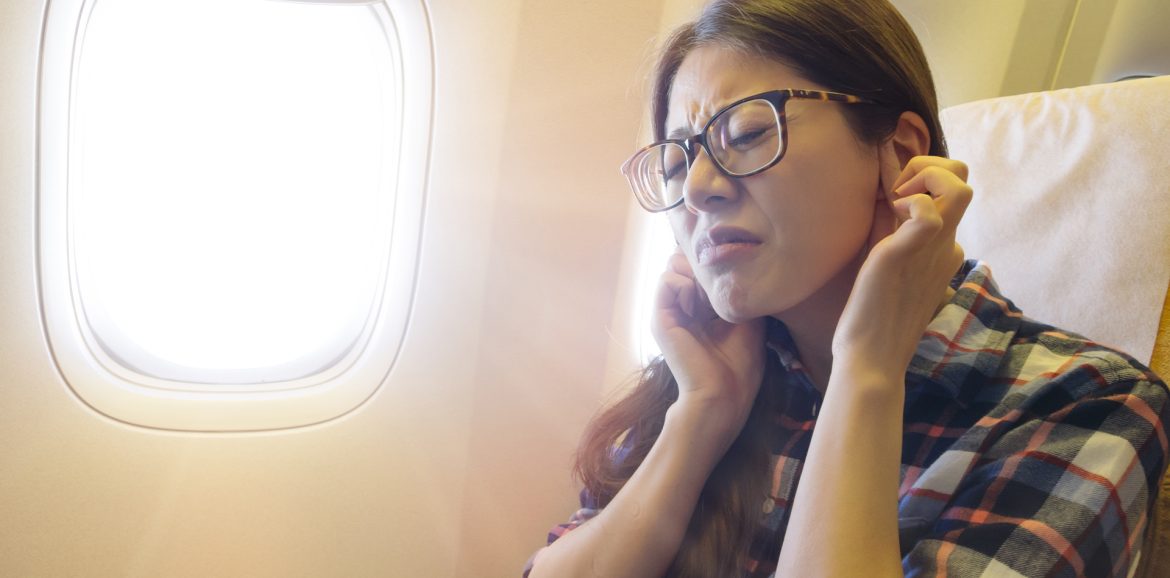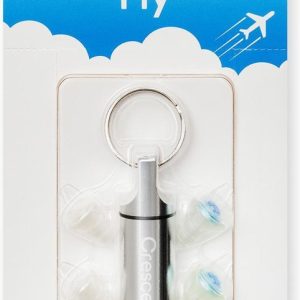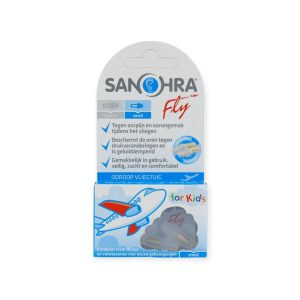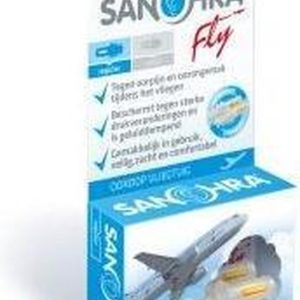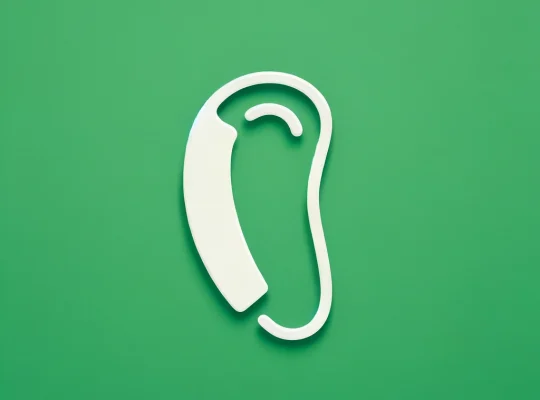It is a familiar phenomenon for people who fly: impaired hearing or earache during takeoff and descent. It is an annoying feeling, but fortunately also easy to solve and prevent. In this article, we explain how it comes about and what you can do about it.
Air pressure while flying
An airplane is a pressurized cabin. The air pressure in it is artificially regulated because the air pressure outside the plane at higher altitudes is too low for humans to survive in. However, the pressure inside the cabin at cruising altitude remains slightly lower than what we are used to when our feet are on the ground.
While rising
As the aircraft rises, the pressure in the cabin gradually decreases. This has the effect of creating excess pressure behind the eardrum. This pushes the eardrum outward and may reduce its function, leading to a dull feeling in the ear or earache. The excess pressure in the ear can be accommodated by the Eustachian tube, which runs from the middle ear to the pharynx and acts as a kind of valve. Air can escape through this and thus the pressure inside and outside the ear becomes equal again.
While descending
As the plane descends, it goes the exact opposite way: the pressure in the cabin gradually increases, creating negative pressure in the middle ear. This pushes the eardrum inward and, as in the case of overpressure, can reduce its function, which also leads to impaired hearing or earache. To equalize the pressure again, in this case, air has to go in through the Eustachian tube. This is often more difficult than going out, which is why relatively more people experience these hearing problems precisely when descending.
What can I do about earache while flying?
What happens is quite normal and, in most cases, harmless. Most of all, it is unpleasant. There are two practical solutions if you experience impaired hearing or ear pain when flying:
Swallowing, chewing or yawning
When you swallow, chew or yawn, the Eustachian tube opens. Thus, the difference in pressure between the environment (the cabin) and the middle ear is resolved. You can repeat this as the plane continues to ascend or descend. Eating or drinking something or chewing gum can help.
Clearing the ears
If swallowing, chewing or yawning doesn’t help, you can try clearing the ears. This is also called, with a fancy word, the Valsalva Maneuver. This involves holding your nose and mouth closed and “breathing out. This increases the pressure in the nasopharynx and, as a result, the Eustachian tube opens briefly, equalizing the difference in pressure inside and outside the ear. However, always do this with caution and without pushing too hard.
Flying with a cold
If you suffer from a mild cold, a nasal spray or nose drops can help keep the Eustachian tube open. It is wise to start this a few days in advance. With a severe cold or allergy, such as hay fever, flying can lead to severe ear pain and even hearing damage. In such cases, we recommend that you prefer not to fly.
Preventing ear pain while flying
Prevention, of course, is better than cure. There are several types of pressure-regulating hearing protectors on the market that cause the pressure in the ear canal to change more gradually, reducing the effects of pressure changes on you. They also have the added benefit of muffling the unpleasant sounds on the plane (engines, crying babies).
Universal hearing protection for flying
In our webshop, you will find different variants of pressure-regulating earplugs.
Pressure-regulating custom earplugs
It is also possible to have your hearing protection custom-made. We then mould the earplugs to your ears and fit them with a pressure-regulating filter. This filter can also be exchanged with, for example, a music filter or a filter suitable for motorcycling. This form of hearing protection is thus multifunctional and fits like a glove!
Do you have any questions?
Do you still have questions or need personal advice after reading this article? Feel free to contact us, we would love to help you find the perfect hearing solution. You can reach us via our contact form, [email protected] or on 075 20 25 203.

